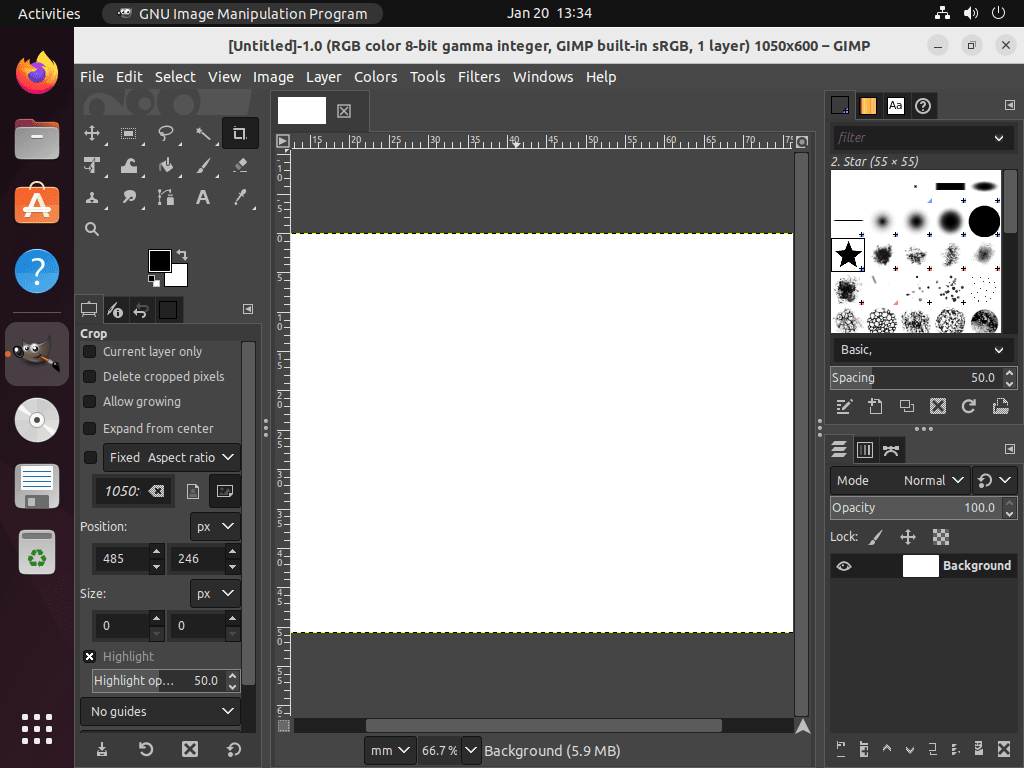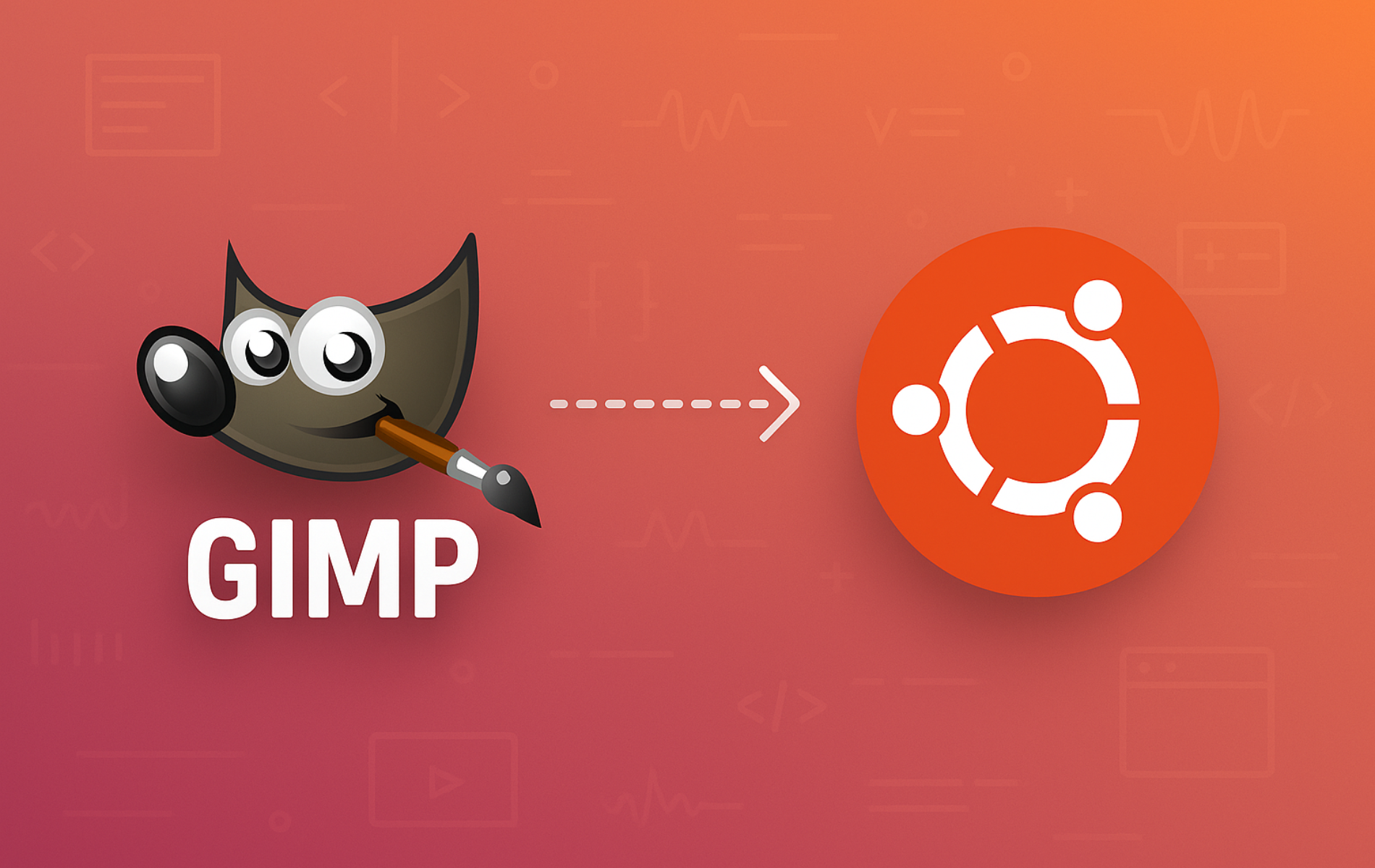GIMP (GNU Image Manipulation Program) is a versatile and powerful open-source image editor, widely recognized for its extensive range of features, including photo retouching, image composition, and graphic design. As a popular alternative to commercial image editors like Adobe Photoshop, GIMP offers tools for both basic editing tasks and advanced digital art creation. With support for various plugins and customizations, GIMP can be tailored to meet the specific needs of photographers, designers, and artists. By the end of this guide, you will have GIMP installed and configured for photo editing and graphic design work on your Ubuntu system.
Choose Your GIMP Installation Method
Ubuntu offers several ways to install GIMP, each with different trade-offs between stability, version freshness, and system integration. The table below summarizes your options:
| Method | Channel | Version | Updates | Best For |
|---|---|---|---|---|
| APT (Default) | Ubuntu Repos | Stable (2.10.x or 3.0.x) | Automatic via apt upgrade | Most users who want system-integrated stability |
| APT (PPA) | Launchpad PPA | Latest 2.10.x | Automatic via apt upgrade | Users on Ubuntu 22.04/24.04 wanting latest 2.10 features |
| Flatpak | Flathub | Latest 3.0.x | Manual via flatpak update | Users wanting GIMP 3.0 with sandboxed isolation |
For most users, the APT method is recommended because it provides automatic security updates and tight system integration. However, if you specifically need GIMP 3.0 features (non-destructive editing, improved CMYK support, new GTK3 interface), choose the Flatpak method. The PPA option is best for users on Ubuntu 22.04 or 24.04 who want the latest GIMP 2.10 release without upgrading to version 3.0.
Ubuntu 26.04 LTS ships with GIMP 3.0.x in the default repositories, while Ubuntu 22.04 LTS and 24.04 LTS provide GIMP 2.10.x. The ubuntuhandbook1 PPA supports Ubuntu 22.04 and 24.04 only. If you need GIMP 3.0 on older LTS releases, use the Flatpak method. Commands shown work identically across all supported LTS releases unless otherwise noted.
Method 1: Install GIMP via APT
Update Ubuntu Before GIMP Installation
Before proceeding with the installation, ensure your system is up to date to avoid any potential dependency issues. First, update the package index by running the following command:
sudo apt updateNext, upgrade any outdated packages on your system:
sudo apt upgradeChoose Your GIMP APT Installation Option
There are two recommended options for installing GIMP with the APT package manager. Choose the option that best fits your needs:
Option 1: Install GIMP from Ubuntu Repository
Using the Ubuntu repository is the easiest and most secure way to install GIMP. This method does not require adding additional repositories, making it straightforward and reliable. Additionally, it integrates seamlessly with your system’s package management for automatic updates.
To install GIMP using the Ubuntu repository, enter the following command:
sudo apt install gimpOnce the installation completes, verify the setup by checking the GIMP version:
gimp --versionThe output varies depending on your Ubuntu version:
Ubuntu 26.04 LTS:
GNU Image Manipulation Program version 3.0.6
Ubuntu 24.04 LTS:
GNU Image Manipulation Program version 2.10.36
Ubuntu 22.04 LTS:
GNU Image Manipulation Program version 2.10.30
Option 2: Install GIMP via PPA
The following method imports a well-known PPA maintained by ubuntuhandbook1, which provides the latest GIMP 2.10.x builds for Ubuntu LTS releases. This option is ideal if you want newer features and bug fixes than the default repository offers.
This PPA supports Ubuntu 22.04 LTS and 24.04 LTS only. Ubuntu 26.04 LTS already includes GIMP 3.0 in the default repositories, so the PPA is not needed. For GIMP 3.0 on older releases, use the Flatpak method instead.
First, import the PPA to your system:
sudo add-apt-repository ppa:ubuntuhandbook1/gimp -yAfter adding the PPA, run a quick update to sync the newly imported repository with your APT cache:
sudo apt updateNow install GIMP from the PPA. If you already have GIMP installed from the default repository, this command will upgrade it to the PPA version:
sudo apt install gimpOnce complete, verify the installation by checking the version:
gimp --versionGNU Image Manipulation Program version 2.10.38
Method 2: Install GIMP with Flatpak and Flathub
Flatpak offers an alternative installation method that provides a sandboxed environment, isolating GIMP from your system for improved security. Because Flatpak packages ship independently of your distribution, you can run the latest GIMP 3.0 release regardless of your Ubuntu version—making this approach particularly useful on Ubuntu 22.04 or 24.04.
Flatpak is not pre-installed on Ubuntu. If you have not set it up yet, install it with
sudo apt install flatpakand restart your session before continuing. For detailed setup including the Flathub repository, follow our Flatpak installation guide for Ubuntu.
Enable Flathub Repository
Before installing GIMP through Flatpak, you must enable the Flathub repository, which serves as the primary source for Flatpak applications. To add Flathub, execute the following command:
sudo flatpak remote-add --if-not-exists flathub https://flathub.org/repo/flathub.flatpakrepoThis command adds the Flathub repository to your Flatpak configuration if it doesn’t already exist, ensuring you have access to GIMP and thousands of other applications.
Install GIMP from Flathub
With Flathub enabled, you can now install GIMP. Run the following command to download and install the latest version:
sudo flatpak install flathub org.gimp.GIMP -yAfter installation completes, verify GIMP is available by checking the Flatpak package info:
flatpak info org.gimp.GIMPGNU Image Manipulation Program - Create images and edit photographs
ID: org.gimp.GIMP
Ref: app/org.gimp.GIMP/x86_64/stable
Arch: x86_64
Branch: stable
Origin: flathub
Version: 3.0.6
Launch GIMP
After successfully installing GIMP, you can launch it using either the terminal or the graphical application menu. The method depends on your preference and how you installed GIMP.
Launch GIMP from Terminal
If you installed GIMP via APT (default repository or PPA), launch it directly from the terminal:
gimpAlternatively, if you installed GIMP using Flatpak, use the following command instead:
flatpak run org.gimp.GIMPLaunch GIMP from Applications Menu
The most common way to launch GIMP is through your desktop environment’s application menu. To open GIMP using this method, follow these steps:
- Click on Activities in the top left corner of your screen.
- Select Show Applications (represented by a grid of dots) or type “GIMP” in the search bar.
- Locate the GNU Image Manipulation Program icon and click on it.

Manage GIMP
Update GIMP
Keeping GIMP updated ensures you have the latest features, bug fixes, and security patches. Use the appropriate command based on your installation method.
Update GIMP with APT
To update GIMP installed via APT (including PPA installations), run the following commands:
sudo apt update && sudo apt upgrade gimpUpdate GIMP with Flatpak
To update GIMP installed via Flatpak, execute the following command:
sudo flatpak update org.gimp.GIMPRemove GIMP
If you no longer need GIMP on your system, uninstall it using the appropriate commands based on your installation method.
Remove GIMP with APT
To uninstall GIMP installed via APT, run the following command:
sudo apt remove gimpAfter removing GIMP, clean up any orphaned dependencies that APT installed alongside the package:
sudo apt autoremoveIf you imported the GIMP PPA, remove it as well to prevent future conflicts:
sudo add-apt-repository --remove ppa:ubuntuhandbook1/gimp -yRemove GIMP with Flatpak
To uninstall GIMP installed via Flatpak, including its application data, execute the following command:
sudo flatpak remove --delete-data org.gimp.GIMP -yAdditionally, remove any unused Flatpak runtimes to free up disk space:
sudo flatpak uninstall --unusedTroubleshooting GIMP Installation
GIMP 2.x Plugins Not Working After Upgrading to GIMP 3.0
Upgrading from GIMP 2.x to GIMP 3.0 (either via Ubuntu 26.04 or Flatpak) may cause some plugins and scripts to stop working. GIMP 3.0 introduced significant changes to the plugin architecture, so expect compatibility issues with older extensions.
Key changes in GIMP 3.0:
- Python-Fu replaced: The legacy Python-Fu (Python 2) has been replaced with a new Python 3-based API. Older Python plugins must be rewritten.
- Script-Fu updated: Script-Fu remains but has syntax changes that may break older scripts.
- Filter locations moved: Many filters have been reorganized into different menus.
To check which plugins are loaded, go to Filters → Python-Fu → Console (for Python plugins) or Filters → Script-Fu → Console (for Script-Fu). If a plugin you need is not available for GIMP 3.0, consider installing GIMP 2.10.x via the PPA on Ubuntu 22.04/24.04.
GIMP Fails to Start from Terminal
If running gimp in the terminal returns “command not found,” the installation may have failed or the binary may not be in your PATH. First, verify that APT installed the package:
dpkg -l | grep gimpIf no output appears, reinstall GIMP:
sudo apt install --reinstall gimpFor Flatpak installations, confirm that Flatpak configured the paths correctly by running:
flatpak list | grep -i gimpIf GIMP appears in the list but won’t launch, try running it with verbose output to see error messages:
flatpak run org.gimp.GIMP --verboseConclusion
You now have GIMP installed on Ubuntu with access to professional-grade photo retouching, image composition, and graphic design tools. Whether you chose the APT method for system integration, the PPA for the latest GIMP 2.10.x features, or Flatpak for GIMP 3.0 with sandboxed isolation, regular updates will keep your installation current. For further learning, explore plugins and brushes from the GIMP community, or consider complementary tools like Inkscape for vector graphics, Krita for digital painting, Darktable for RAW photo editing, or ImageMagick for batch image processing.
Useful Links
Explore these official resources to deepen your GIMP knowledge:
- GIMP Official Website: Download options, feature overviews, and the latest release news.
- GIMP Documentation: Comprehensive user manual covering all tools and features.
- GIMP Tutorials: Step-by-step guides for photo editing, digital painting, and graphic design.
- GIMP Developer Resources: Source code, development roadmap, and contribution guidelines.
- GIMP on Flathub: Flatpak package page with version history and installation instructions.


